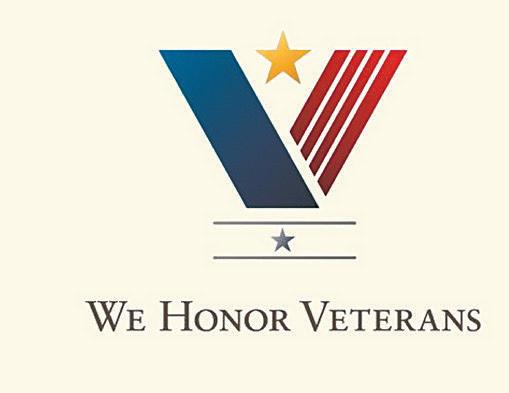VETERANS CHRONICLE
NOVEMBER 2024

Veterans Day celebrates all those who have served
Look inside for:
• Inland Northwest Honor Flight
• Mann-Grandstaff VA Hospital recognized for quality
• How to make sure you get your benefits





Veterans Day celebrates all those who have served
Look inside for:
• Inland Northwest Honor Flight
• Mann-Grandstaff VA Hospital recognized for quality
• How to make sure you get your benefits



VETERANS HELP NET
Don Walker
Bryan Bledsoe
MANAGING EDITOR
Joe Butler
ART DIRECTOR
Anne Potter
DIRECTOR OF SALES
Scott Baumbach
Veterans Help Net partners with The Spokesman-Review to publish Veterans Chronicle each quarter to increase awareness about veteran issues and to help veterans find hope and help.
To share a veteran story or information about resources for veterans, please contact info@ veteranshelpnet.com, call (509) 655-9266 or visit www. VeteransHelpNet.com.
For advertising information, please contact advertising@spokesman. com or (509) 459-5095.
No portion of this magazine may be reproduced in whole or in part without written consent of the publisher.
































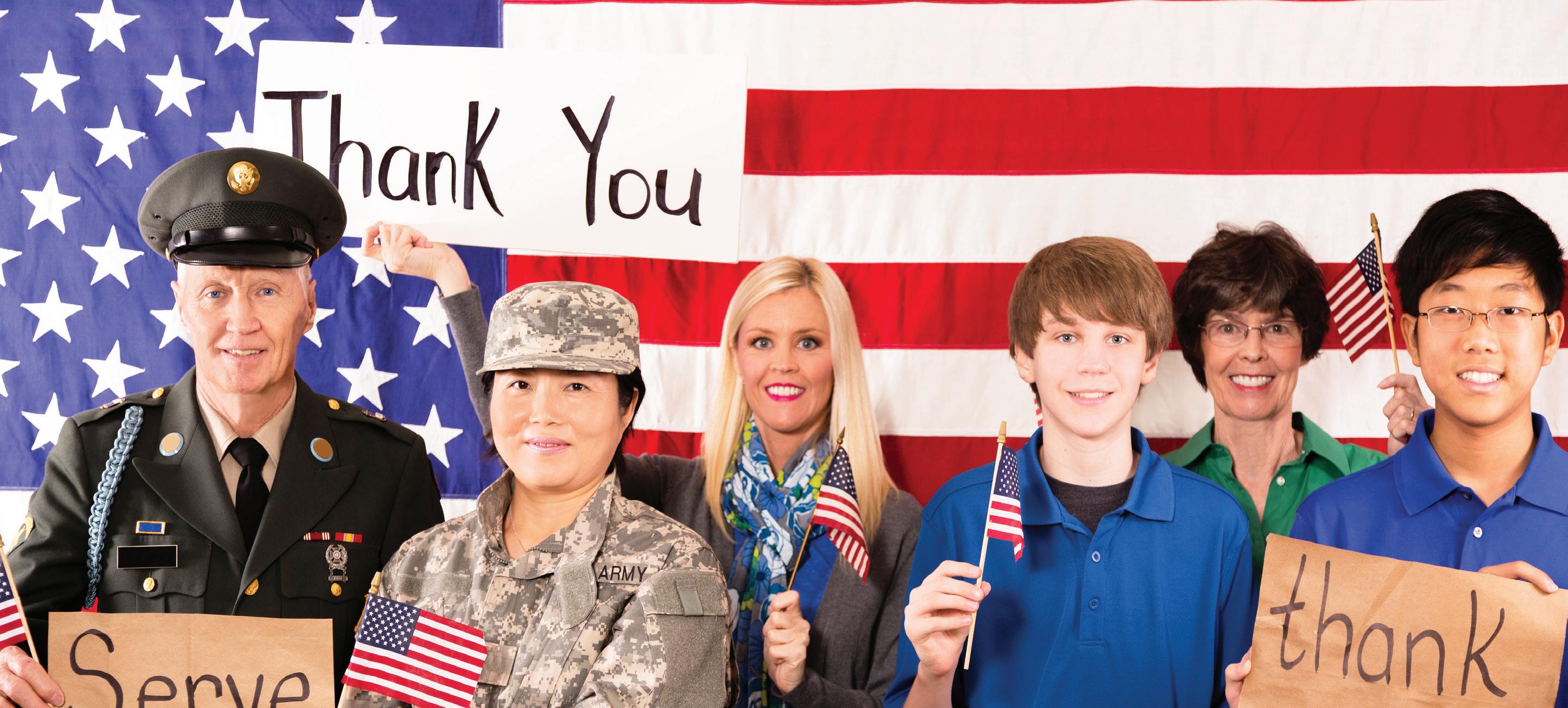
By Ruth Aresvik Veterans HelpNet Correspondent
We hear the word “veteran” all the time. We all know that a veteran is actually a person who has had long experience in a particular field. For example, I am a veteran of constantly misplacing my glasses. I am a veteran of picking up my dog’s “gifts” from the backyard and during assorted walking trips. And I am a United States Navy veteran.
The definition of the military veteran as outlined in the 38 U.S. Code-101 is a person who has served in the naval, air or space military service and was released or discharged honorably. It is active duty, active duty for training where the person has become disabled or has passed away, or inactive duty where the person has become disabled or has passed away because of an
injury, infraction, or accident. And what, you may ask, is the clear cut separation and definition of “active” versus “inactive”? I shall refer you to “The Soldiers Project” (www.thesoldiersproject.org) for that lesson.
However, as we celebrate and give honor on this Veterans Day, here are some other interesting definitions and facts:
WAR VETERAN: War veterans are active-duty or reserve military members who have been in an area of conflict with another nation or in the surrounding waters to support activities against a national enemy.
COMBAT VETERAN: Combat veterans are active-duty or reserve military members who have encountered any degree of combat
for a period of time in a foreign space because of an offensive, defensive, or friendly-fire action with a national enemy.
RETIRED VETERAN: Retired veterans are any military members who have served for a minimum of 20 years in an active-duty or reserve position. Members who are medically retired because of injuries sustained during service are also considered retired veterans, regardless of their number of years in service.
PROTECTED VETERAN: Protected veterans are written under the 38 U.S. Code4212 as “safeguarded” from discrimination. There are four subcategories for a protected veteran:
• Disabled Veteran: Any military member who has been injured
during combat or because of peacetime incidents while serving and from then, permanently disabled.
• Recently Separated Veteran:
Any military member who has been released or discharged within the last 3 years from active duty.
• Campaign Badge Veteran:
Also referred to as an active-duty wartime veteran, a campaign badge veteran is any military member who has served during a period of war or a campaign or expedition where a campaign badge is issued by the Department of Defense.
• Armed Forces Service Medal
Veteran: Any military member who has been awarded an Armed Service Medal while on activeduty service and the medal is listed on the DD214 form.
We all most likely are veterans in one way or another. But simply taking that original definition and applying it to a military veteran is not enough. What reminds us of the freedoms we have on any given day? School children reciting the Pledge of Allegiance; singing the National Anthem at a sporting event, watching a military Honor Guard leading a 4th of July parade; a sea of small flags on graves at a Memorial Day event; or Wreaths Across America on those same graves. A red crepe paper poppy. These and much more possible, and many times at a great cost, courtesy of your United States military veterans.
By Don Walker Veterans Help Net
I got this call a while back… Don is a good friend, nearly 80 yrs old. Dave never used his VA for anything but wondered if he was missing out on some benefits.
The conversation started like this:
“Was it too late to ask?”
“Do I still have benefits?”
“WHERE DO I START?”
I have been working with VA support organizations for over six years and write veteran help-focused articles like this one for two local newspapers, but I didn’t have a straight answer for Dave. I didn’t have a step 1, step 2 etc. here is what you do.. Or “Write down this phone number and here is who you can talk to.”
I do have lots of names and lots of numbers, but that is not what Dave needed. He needed, and should be given:
STEP 1: “Get your DD 214.” (Can’t find it? Here’s the number or site.)
STEP 2: Call or visit a Veteran Service Officer like John or any of the others at the Spokane Valley Veterans Service Cetner at (509) 477-3691 or online at www.spokanecounty.org/1122/ Veteran-Services
I discovered in my shotgun approach at helping veterans find “Help and Hope,” I forgot that what they really need sometimes was more of a “rifle shot” -- a
very specific, very easy next step.
Our monthly and quarterly publications have 4-12 pages of VA help information but if I had one page that only had a name and phone number of a local VSO, it might be more beneficial.
I know our articles, editorials and features raise awareness and lead people to find “Help and Hope” but here is my point…
If you want to help veterans, start with:
• A name and a number for them to call
• Tell them how to get their DD214 by phone, online or in person
When we started “Veterans Help Net” we visualized a group of knowledgeable vets answering phone calls from a bunch of vets, family members and friends calling for advice and direction. The phone would be answered by a bunch of smart, motivated helpers that could give them things like where to go next, who to talk to, and what to do next.
The fact is…we already have these people in the form of our local Veteran Service Offices..
So…want to help vets?
Go to “How Can I Get Help?” section on this page. Take a picture with your phone or cut it out and put it in your billfold or purse. The names and numbers are all there. Next time a veteran asks you for help, just show them. You will help them and they will thank you.
VA.gov
The Department of Veterans Affairs website has resources on every topic relevant to veterans.
VA.gov/welcome-kit
The VA Welcome Guide covers all types of benefits and services available for veterans, new recruits, active service members and their families.
Explore.VA.gov/benefitsnavigator
Explore VA benefits and discover which ones you and your family may be eligible to receive.
Spokane County Regional Veteran Service
1117 N. Evergreen Rd., Spokane Valley, WA (509) 477-3690
Apply for emergency services, or have any benefits or service questions answered by 5 Veteran Service Officers (VSO) and staff.
Kootenai County Veteran Services and Benefits Office
120 E. Railroad Ave., Post Falls, ID (208) 446-1092
Meet with a VSO or staff for help with VA benefits enrollment, claims or other veteran needs.
Goodwill Support Services for Veteran Families (SSVF)
130 E. Third Ave., Spokane, WA (509) 828-2449
SSVF helps homeless veterans and their families find housing and connects veterans with other support organizations. Healthcare for Homeless Veterans (HCHV)
504 E. Second Ave., Spokane, WA (509) 435-2019
Provides healthcare and outreach for housing, job opportunities and counseling.
Spokane County Regional Veteran Service (509) 477-3690
Kootenai County Veteran Services and Benefits Office
120 E. Railroad Ave., Post Falls, ID (208) 446-1092
Veteran Crisis Line 1 (800) 273-8255, press 1 North Idaho Crisis Center (208) 625-4884
Washington or Idaho 2-1-1
Dial “2-1-1” for health and human resources referrals.
Spokane-area military veterans will display their artwork for a show Nov. 16 at Shotgun Studios in Spokane.
The family-friendly show runs from noon-5 p.m. at the studio at 1625 W Water Avenue.
Kathy and John Thamm run Shotgun Studios. A longtime Spokane area artist/ painter and Air Force veteran, John published “Vets: Fifty Portraits of Veterans and Their Stories” in 2010, a book that features area servicemen and women from every branch who fought from World War II
through Iraq.
The VetsGarage offers a unique place where veterans and non-veterans can connect, build, and create woodworking projects in a supportive and understanding environment. It is located at 224 E. Pacific Ave. in Spokane.
To learn more call (509) 688-3757.
- Tzena M. Scarborough, Woman Army Veteran and Woodturner

By Don Walker Veterans Help Net
Over the last five years, we published articles about our volunteer organization Veterans Help Net. We stated who we were, why we started and what we did to help provide “Help and Hope” for our veterans and their families. During that time we published over 60 monthly/quarterly editions of the Veterans Chronicle (Spokesman Review) and the Veterans Press (CDA/Post Falls Press). We visited dozens of Veterans Service organizations and groups. We interviewed many veterans and their family members and published hundreds of articles and stories, all with the objective of increasing awareness in our communities to the benefits and services available to our Veterans. All of this was done to provide “Hope and Help” through information and awareness. As we evaluated the past years, we thought it might be important to let you know….
What we Learned:
We will divide what we learned into four sections
1. Perceptions
2. Observations
3. Obstacles to Success
4. Conclusions
1. PERCEPTIONS: (what we’ve heard)
a. Most veterans and families were not aware of many of the benefits and services they have earned with their service.
b. Many veterans think the process is too hard so many never tried.
c. Many veterans found it difficult to get started so they quit trying to get help d. Most did not know how to start the process of getting their benefits or obtaining VA medical help.
e. Many veterans did not seek help because they thought other veterans needed or deserved it more and thought that they would be “taking someone’s place in line.”
f. In general, we found a large amount of negative perception from the public and many veterans about the VA’s treatment and accessibility to services.
Many have lived or heard about the horror stories associated with some past VA treatment or handling of veterans who tried to get help and were turned down or treated poorly.
2. OBSERVATIONS
A. The VA today is not the VA of 10 years ago
I. We also found that the most veterans that were currently in the VA system had a significantly more positive perception
and thought they were getting great help.
II. Veterans currently using the VA medical programs stated clearly that they thought their help and services were not just good, but great.
III. Help is there if you have patience and are willing to do your part to complete the forms and provide the required documentation.
B. The process is hard: Without the help of a local Veteran Service Officer VSO (see “How Can I Get Help” section on Page 5) many veterans struggle with the online application process on VA.gov and became frustrated and confused about what to do next and how to get started.
C. You have earned the right to get help. The VA has the desire and the capacity to help all the veterans that have earned the benefits through their service.
3. OBSTACLES:
a. The Veteran Service Officers are busy and are sometimes overloaded. It will take time for them to get to you and start the process. But you must start the process and be patient as they will get to you and help you move through the system.
b. You may not be aware of all the benefits available to you and your family.
I. Ask your VSO for a benefits review. II. There are lots of resources to read (including our website VeteransHelpNet. com)
III. All states, and most counties have Veterans Service Centers and websites to help you discover and understand your benefits.
c. Find or order your DD214 or certificate of service as you can’t start without it. Here is a link to order yours. https://www.va.gov/records/get-militaryservice-records/ (See “How Can I Get Help?” on Page 5)
d. If you can’t use the online process or struggle with it.
I. You could ask a friend or family member to help you.
II. You can contact a local VSO or go to the local VA Hospital and make application for your records.
4. CONCLUSIONS: It is worth it! You do Deserve it! You can get through the process!
Look, Soldier… “You Served.” Because you served, you owe it to yourself and your family to seek the benefits or services that you “EARNED WITH YOUR SERVICE.”
If you quit….Try Again. If you never started….Start Now They won’t do it for you… You have to do your part.
Make your application, gather your information or documents they ask you to provide.
Ask for help.
“You will never know unless you ask” Don’t wait… Don’t be the veteran that says “ I should have done this 10 years ago…”
Hey vets!!!!!
Make your life better. Find out your options Apply for the benefits or services you have earned
“How Can I Get Help” section on Page 5 for sources in Eastern Washington and North Idaho Don Walker VeteransHelpNet.com 509-998-6484 don@Vethelpnet.com Facebook@Veterans Help Net
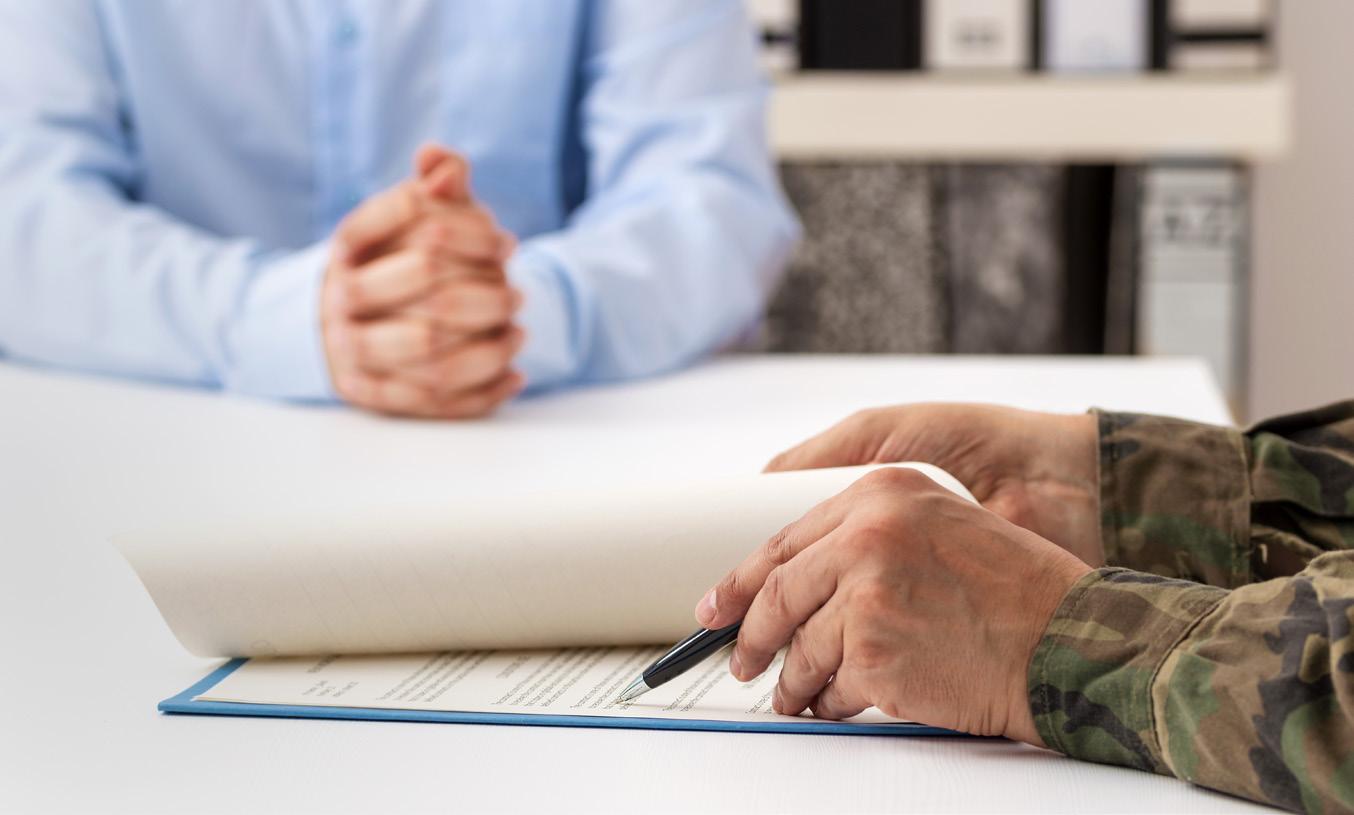
Why ‘intent to file’ is an important step in benefit process
Attention veterans and family members: if you want to file a claim but need more time or additional information, you should submit an “Intent to File.”
This is an important part of the VA compensation process especially if someone needs additional time to gather support for a claim. This also includes Survivors Pension and
Dependency and Indemnity Compensation. This process allows you more time and also protects the earliest possible effective date for any benefits resulting from your claim. The date VA receives your intent to file will be protected as your effective date. However, the correct application form must be submitted within one year.
What should an Intent to File claim contain?
• Enough personal information to identify the veteran or claimant
• The general benefit you are seeking
• You or your representative’s signature
There are three ways to notify VA of your intent to file a claim.
1.Online through eBenefits at www.ebenefits.va.gov.
Use the support of a VSO (find a Veteran Service Officer by going to the “How Can I Get Help?” section in this publication). You must follow this process:
• Initiate a claim.
• Complete the personal information page.
• Save to establish your effective date. This allows one year to complete the application.
2. Mail paper VA Form 21-0966, “Intent to File a Claim for Compensation and/or Pension, or Survivors Pension and/or DIC.” You can access it at www.vba.va.gov/pubs/ forms/VBA-21-0966-ARE.pdf.
3. Over the phone or in person: Call the National Call Center at 800-827-1000.
Tell a representative in person at one of VA’s regional benefit offices. Locate a regional office at www.benefits. va.gov/benefits/offices.asp.
You will have up to one year from the date VA receives your intent to file to submit a formal claim. This process also allows VA to award backdated benefits from the date of your diagnosis or treatment. Your intent to file just needs to be filed within one year of the diagnosis or treatment.
For more information, call 800-827-1000, visit explore.va.gov/intent-to-file, or look at “How Can I Get Help?” on Page 5 of this publication.

Chad Kubik
NMLS# 609985
Residential Loan Officer 509-227-5449
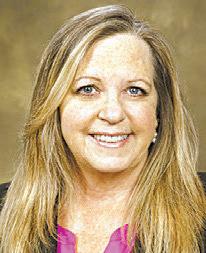
Lisa Knight NMLS# 785378
Residential Loan Officer 619-206-7019

Marcy Bennett NMLS# 507122
Residential Loan Officer 509-227-5461

Monica Lay
NMLS# 720624
Residential Loan Officer
509-435-5639
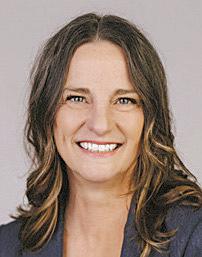
Andrea Broenneke NMLS# 4216

Pete Loeun
NMLS# 409746
Residential Loan Officer 714-222-8261
answered about what is it like, who can go?
By David Sutton Special Correspondent
“Honor Flight, I probably don’t qualify. I was never in a war or in combat!”
“Honor flight? I’m not a veteran because I got drafted.”
“Geez, I’m a woman. I don’t qualify for veteran’s anything let alone an Honor Flight.
What is it, anyway?”
These are just a few of the comments shared by veterans who either thought they did not qualify to be honored by their country for their military service or had no idea what the Honor Flight was all about. Many veterans in the Inland Northwest thought the Inland Northwest Honor Flight was a free gift to go sightseeing. Some veterans felt that they sacrificed a part of their lives by serving in the military and th it. They might say their country forgot about them or say what they did while in uniform did not matter much. Little did they know that their country and local community were offering them a special opportunity to be honored for the sacrifices they made while serving as a soldier, a sailor, a Marine or an Airman. The United States of America wants to give kudos to every one of them by focusing on its appreciation for their military service.
Inland Northwest Honor Flight is offering to actually bestow genuine honor on every veteran by spending a lot of money and showing that their hard work that has resulted in a display of a sincere desire to make veteran’s efforts come alive.
“The Honor Flight is not a sightseeing adventure. Yes, historic landmarks and other places of interest are seen. The honoring of veterans is the priority,” one veteran explained to his friend who was taking the Honor Flight for the first time.
He continued: “If you view this trip as a sightseeing venture, you will most likely not feel the impact and honors that are being bestowed upon you. You and I are special citizens because we served in the military and deserve to be remembered as warriors who were willing to fight to preserve the freedom we enjoy in this country. We are valuable to America because of that service.
And you and I deserve to be honored with a first-class journey on this Honor Flight to remember our service, put closure to our injuries and enjoy the fact that America thanks us for all we have done.”
It took some real soul searching and a trip to our nation’s capital to realize the impact our country has made to preserve memorials
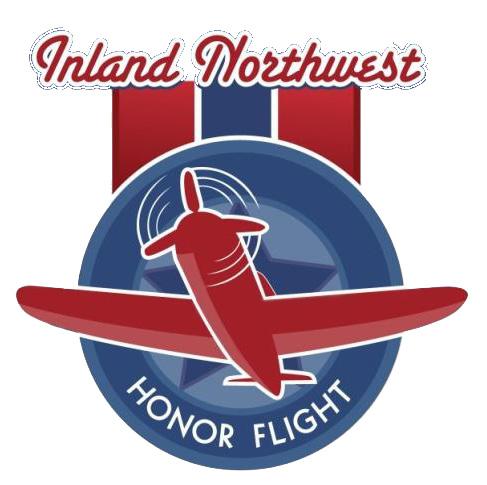
of battles fought by simple citizens who loved the United States of America enough to serve in every possible way. Some gave their lives, others suffered the loss of limbs that altered their dreams, while even others were so impacted by their military experience they required professional help when their battles ended.
Other GIs cooked, some typed, others changed tires in the motor pool. Veterans drove trucks, wrote articles for the camp paper, trained almost constantly for combat deployment, and performed myriad of jobs while in uniform.
All are veterans!
Exactly what is the Inland Northwest Honor Flight?
It is part of a network of organizations throughout the United States founded for the specific purpose of honoring men and women veterans for their service. Founded in 2009 by Tony Lamanna, it is a regional hub of the Honor Flight network.
“The mission of Inland Northwest Honor Flight is to transport Northwest war veterans to Washington, D.C., to visit those memorials dedicated to honor their service and sacrifices, “ he said. “since our inception, we have escorted over 2,700 WWII,

Meikel, Honor Flight volunteer
Korean War, and Vietnam War veterans.”
Lamanna had a vision to honor veterans.
“I grew up in a family where we watched patriotic movies and movies about fighting for freedom, “he said. “My dad and I would talk about World War II and I developed a deep respect for veterans and fighting military men and women.”
When Lamanna heard about the Honor Flight program he decided to put footsteps to his dream by doing what he could to support and honor veterans.
“I mowed lawns and worked at whatever I could to show my support -- this was years ago when I first heard about the Honor Flight Organization,” he said “In 2009 I was moved to start our local group and here we are.”
The development of INHF is impacting all veterans by helping them realize they are not alone, according to Lamanna.
“Even in the foxholes and beaches of unknown territories.
And on patrol through the jungles and rice paddies of foreign lands to the extreme heat of deserts sands….they are remembered, prayed for and appreciated by citizens back home,” he said. All trips are funded by donations from private citizens, civic
groups, school groups, businesses and corporations. There is no cost whatsoever to veterans.
Sandy Meikel, a volunteer, said each flight costs about $250,000 to $300,000.
Meikel noted the cost and effort it takes to produce and operate an Honor Flight to Washington DC. “Each flight cost about $250,000 to $300,000”, she said. “That includes chartering a commercial airplane and luxury busses that are fully equipped for the safety and comfort of veteran passengers, lodging at a 5-star hotel, all meals, admissions and all other expenses. It does not cost our veterans a cent.”
On the flights, “guardians,” people who assist disabled veterans or those with health issues, accompany the veterans during the entire journey. INHF provides wheelchairs at each airport and on the buses for those who need them. The 36-hour tour always has professional medical personnel present in case of an unexpected emergency. These aides are not physicians, but some may be nurses who volunteer their time. Occasionally a doctor who may or may not be a veteran will travel as a volunteer.
Volunteers and guardians do not necessarily have to be veterans.
“We have citizens in the community who go just because

they want to be a part of honoring our veterans,” she said. Each civilian volunteers pays the required $900 needed for their own expenses.
“Many times, we see grandkids accompanying Grandpa out of a loving and prideful relationship,” she said.
For years, the veteran-filled buses followed a police escort. Traffic was stopped as the buses weaved their way through the city. Meikel said the included a sign on the side noting United States military veterans were aboard.
“Sometimes we witnessed the cars stop and the people would wave and cheer as we passed. Some even saluted,” she said.
However the escorts are currently “on hold,” Lamanna said. “We don’t know exactly why, but the INHF representatives are working with the Department of the Interior to get the services restored.
Meikel said there are a lot of great stories that come out of our escorted journeys.
“Some of them are even funny,
“Certainly, it’s better than C-rations,” quipped an aged battlefield soldier.”
“The Honor Flights are not only very memorable but they, at times, are very moving,” Meikel noted.
“Droves of high school kids would meet the buses as they began to park at the airports and memorials, and they would cheer and shake hands with every veteran as they stepped off the bus. It was a very moving experience.”
Then she paused.
“That was a very heartwarming moment because you could see the genuine interaction and tears in the eyes of a few of those young people. It was a very special time,” she said.
Some of the students even kneeled and indicated that they and others in the group were praying for the veterans as they disembarked.
most are heartwarming,” she said. “Tony has a real heart for veterans! With his leadership and the efforts of dozens of volunteers our veterans experience a first-class trip and can see the love and respect through the way they are treated by everyone involved.”
A 36-hour trip seems kind of rushed, doesn’t it?
“Not really,” Meikel answered. “There is a time difference, so the trip is planned to take that into account. If one of the passengers kept his Spokane-set watch, we would have actually eaten dinner at 10 p.m. and had breakfast at 3 in the morning! But we adjust and mostly don’t even pay attention to the time difference.”
Dinners are elaborate and delicious gourmet banquet food. Breakfast is a first-class dining event, complete with gourmet coffee and specialty breakfast items. Lunch is more than a simple boxed lunch. It contained a nutritious scrumptious meal, specially designed and catered.
U.S. Marine Corps Memorial, and the Memorial of the Tomb of the Unknown.
One of the more popular visits is at The Tomb of The Unknown watching the changing of the Guards.
One veteran said he had always heard about the memorial and read about the highly disciplined unit that guards it.
“Watching it not only brought back some memories, but chills ran down my mine spine,” he said. That segment of the visit also included a driving tour of Arlington National Cemetery.
U.S. Rep. Cathy McMorris Rodgers once met a group of veterans at the Navy Memorial, greeting them and expressing her gratitude for their service. It was a significant time where the veterans could take pictures and chat with her.
The trips are well organized and unhurried. As the airplane sets down, instructions are read for loading the buses.
The veterans often move through the gamut of cheering well-wishers inside the terminal.
Immediately the buses head for the United States Air Force Memorial before checking in at a five-star hotel. Dinner is next, complete with words of honor, encouragement and praise from noteworthy speakers.
Because of the time changes, it’s a late-night banquet and then off to hit the sack. Breakfast comes early and the buses head for a day of visiting the World War II Memorial, the Korea War Memorial, the Vietnam Veteran’s Memorial, the Iwo Jima Memorial, the Women’s Military Museum, the Navy Memorial, the
The Vietnam Veterans Memorial, often called “The Wall,” was a seemingly emotional time for several guests. Men and women veterans could be seem reaching out and touching the name of a friend and former comrade who gave their life in combat.
Many found closure to their grieving. All vets showed signs of pride and thankfulness for the honoring of fallen warriors.
“The experience of seeing the Vietnam Wall really changed me. Seeing some of my friend’s names on the Wall was really moving. It’s hard to explain but it was a healing process for me going there. It feels a huge weight has been lifted off my back and I am a lot happier person,” said a Vietnam veteran.
Recently added to the DC Flight is the assistance of Lutheran Church Charities K-9 Comfort Dogs. The organization sends a Comfort Dog on each flight.
Isaac is one of their most popular dogs. Through the generosity of LCCCD Veteran passengers take turns calling Isaac down the aisle to pet and “comfort” him. The dogs are very well accepted by the veterans and stay with the entourage throughout the entire trip. Occasionally Isaac will remain with one certain veteran to help him feel comfortable and have close companionship.
The U.S. Air Force has offered its trained Comfort Dogs also.
The organizers and staff of INHF try to include the veteran’s whole family. Veteran families are notified so they can better understand the flight activities and the honoring of their loved one.
“A veteran doesn’t need to have been in a foreign country or been in combat to qualify to go. We honor ALL veterans no matter where they served,” Meikel said.
The American Legion recently supported the U.S. Congress decision to allow all veterans who served during the Vietnam era (1961-1974) to call themselves Vietnam veterans, regardless whether or not they ever served in-country.
“Everyone deserves to go (on the Honor Flight),” she said. “It can be a life-changing experience.”
The changes may include closure of the death of a friend who gave his life in combat.
Many veterans have seen a change in their grieving process. Some veterans find their memories have been suppressed because of their battlefield experiences.
“Not everyone sees changes in their lives as a result of the activities of the Honor Flight,” Meikel said. “We are constantly getting positive comments from those who have gone on the trip, but we also know of “healing moments” as veterans share testimonies of their experience.”
“There is no reason not to go!”
David Sutton is a former Military Journalist who served with the US Army during the Vietnam Era. He resides in Spokane with his wife Vickie.
For more information about when and how to sign up for future Honor Flights visit www.inwhonorflight.org or call (509) 624-0222.
Mann-Grandstaff VA Medical Center recently announced that it received a 5-star rating from the Centers for Medicare & Medicaid Services’ (CMS) Overall Hospital Quality Star Ratings and 5 stars from CMS’ quarterly patient satisfaction review, the Hospital Consumer Assessment of Healthcare Providers & Systems.
“This is an incredible achievement by our staff and a tribute to the quality of care we deliver to Veterans every day,” said Robert J. Fischer, Medical Center Director and veteran.
“Many thanks to everyone on our team for ensuring the best quality of care and services you schedule and deliver to our veterans; and done so – in a clean and nurturing environment that is safe, healthy, and friendly.”
VA Under Secretary for
Health Shereef Elnahal, M.D. affirmed the importance of this recognition.
“It’s our commitment that every eligible veteran not only can choose VA health care, but when they do, that they get the very best and safest care possible,” he said. “For the second year in a row, VA care has been shown to be some of the best in the nation. We are dedicated to continuously improving as we strive towards always providing the highest quality of care to veterans.”
Nationally, VA hospitals continue to outperform non-VA hospitals on both CMS’ Overall Star Rating and their quarterly patient satisfaction survey:
• Patient Satisfaction Survey: VA outperformed non-VA hospitals in the most recent CMS
Hospital Consumer Assessment of Healthcare Providers and Systems (HCAHPS) star ratings, with 79% of VA facilities receiving a summary star rating of 4 or 5 stars compared to 40% of non-VA hospitals. This represents the ninth consecutive quarter in which VA facilities have outperformed non-VA counterparts.
• Hospital Quality Ratings: In this year’s CMS Overall Hospital Quality Star Ratings, more than 58% of VA hospitals included received 4- or 5-star ratings compared to 40% of non-VA hospitals. This is only the second year VA hospitals have been included in this review, and VA has outperformed non-VA health care in both years. These findings come at a time when veteran trust in VA
outpatient care has reached an all-time record high of 92%, based on a survey of more than 440,000 Veterans.
Additionally, these findings are consistent with a recent systematic review that found that VA health care is consistently as good as — or better than — nonVA health care. Both CMS ratings aim to improve patients’ ability to make informed decisions about where they receive care. CMS awards Overall Star Ratings to hospitals based on five categories: mortality, safety of care, readmission, patient experience, and timely and effective care. CMS’ HCAHPS summary star ratings combine information across ten measures of patient experience, including staff communication and responsiveness, hospital
environment, willingness to recommend the hospital, and overall hospital rating.
This year’s Overall Star Ratings are based on data collected between July 2019 and March 2023, and this quarter’s HCAHPS star ratings are based on data collected between October 2022 and September 2023. The overall rating — as well as ratings on specific quality and satisfaction measures — of your local VA hospital can be found via CMS’ Care Compare tool. For more information, please contact Bret Bowers at bret.bowers@va.gov (509)434-7378 or visit www. va.gov/spokane-health-care.













The Department of Veterans Affairs offers a range of benefits not only to veterans but also to their surviving spouses, children, and dependents. These benefits serve as a lifeline, providing crucial support and assistance to those left behind. Here are six significant VA benefits that pass on to survivors:
1. Dependency and Indemnity Compensation (DIC):
DIC is a tax-free monthly benefit paid to eligible survivors of service members who died in the line of duty or veterans whose death resulted from a service-related injury or illness. This compensation helps offset the financial burden experienced by surviving spouses, children, and dependent parents.
2. Survivors Pension (Death Pension):
The Survivors Pension provides financial support to low-income, un-remarried surviving spouses and unmarried children of deceased wartime veterans. Eligibility criteria include financial need, the deceased veteran’s wartime service, and the survivor’s income and net worth.
3. Education Benefits (GI Bill Transfer):
Through the Transfer of Entitlement (TOE) option, eligible veterans can transfer all or a portion of their unused Post-9/11 GI Bill benefits to their spouse or dependent children. This benefit covers tuition, fees, housing, and other educational expenses, empowering survivors to pursue their academic goals.
4. Home Loan Guaranty Program: Surviving spouses of veterans may be
eligible for VA home loan benefits, including the VA Home Loan Guaranty program. This program provides loans with favorable terms, such as no down payment and competitive interest rates, making homeownership more accessible for eligible survivors.
5. Healthcare Benefits:
Certain surviving spouses and dependents of deceased veterans may qualify for VA healthcare benefits through programs like CHAMPVA (Civilian Health and Medical Program of the Department of Veterans Affairs). CHAMPVA covers a portion of medical expenses not covered by other insurance plans, offering vital healthcare support.
6. Burial Benefits:
VA burial benefits ensure that veterans receive dignified final arrangements, and some of these benefits extend to their survivors. Eligible survivors may receive compensation for burial expenses, including interment at a national cemetery, a headstone or marker, and a burial flag.
In conclusion, the VA’s commitment to supporting veterans extends beyond their lifetime, providing crucial benefits to their surviving loved ones. From financial assistance to educational opportunities and healthcare support, these benefits serve as a testament to the nation’s gratitude for the sacrifices made by service members and their families.
For more information go to the “How Can I Get Help?” section in this edition or contact Spokane County Regional Veterans Service Center (509) 477-3609 or Kootenai County Veterans Service Benefits Office (208) 446-1092.



If you think a 0% rating means you get nothing, think again! Some veterans have been approved for VA disability benefits but they received a 0% disability rating for their service-connected condition. This is pretty common. The VA calls this a non-compensable disability. Although it may seem nonsensical, a 0% VA disability rating is different from no rating at all. Receiving a non-compensable rating of 0% means that the VA does acknowledge the disability claim could have a service connection - but that the symptoms do not seriously impair the veteran enough to secure VA payments. But with a 0% rating you may be eligible for other benefits: VA Health Care Priority Group Access, Travel pay reimbursement, Service-Disabled Veterans Life Insurance (S-DVI), access to military Commissarys, Exchanges and MWR retail facilities.
The most important thing is you have a service-connected rating. You have your foot in the door. And it is possible to file for an “Increased Rating” if your service-connected medical condition worsens. It also might be possible to secondary connect other conditions to your rated condition.
Here’s some quick facts about Post-Traumatic Stress Disorder, from ptsd.va.gov.
As many as 60% of men and 50% of women experience at least one trauma in their lives. From these, 10% of women develop PTSD at some point in their lives, compared to 4% of men. As many as 7%-8% of the U.S. population will have PTSD at some point in their lives and 5.2 million adults have PTSD during a given year.
The PACT Act was signed into law and became effective August 10, 2022. The Promise to Address Comprehensive Toxins was designed to provide our military service members who were exposed to toxins during their time in service with relief in the form of compensation. It applies to three distinct eras.
• Vietnam Era: Veterans who serviced in Republic of Vietnam between January 9, 1962, and May 7, 1975, or in Thailand, Laos, Cambodia, Guam, American Samoa or Johnston Atoll during that time.
• Gulf War Era: Veterans who served in Bahrain, Iraq, Kuwait, Oman, Qatar, Saudi Arabia, Somalia or the United Arab Emirate (UAE) on or after August 2, 1990.
• Post -9/11 Era: Veteran who serviced in Afghanistan, Djibouti, Uzbekistan, Yemen, Egypt, Syria, Jordan, or Lebanon on or after September 11, 2001, or in any location the VA Secretary determines is appropriate.
Unfortunately the PACT Act has been misinterpreted by many veterans to mean that ANY exposure to toxins qualifies as a compensable event. However, this is NOT the case. While it is true exposure in a necessary element to determine if compensation is warranted, it is also true that the veteran needs to be medically diagnosed with a condition which resulted from that exposure. Under the PACT Act there are 24 presumptive conditions for burn pit exposure.
Lung Conditions: Asthma (Diagnosed after discharge), chronic bronchitis, chronic obstructive pulmonary disease (COPD), constrictive or obliterative bronchiolitis, emphysema, granulomatous disease, interstitial lung disease, pleuritic, pulmonary fibrosis and sarcoidosis. Cancers: Glioblastoma, head cancer, neck cancer, respiratory cancer (such as lung, bronchus, larynx, or trachea), gastrointestinal cancer, reproductive cancer, lymphoma, lymphatic cancer, kidney cancer, brain cancer and melanoma.
Other Conditions: Chronic Sinusitis and Chronic Rhinitis
The good news is if you are medically diagnosed with one of these 24 burn pit presumptive conditions, you won’t need to prove an in-service event, stressor, illness or aggravation.
According to the VA, not all veterans are eligible for the presumptive conditions. Determination of eligibility for benefits due to burn pit exposure depends on WHEN AND WHERE THE VETERAN SERVED, veteran’s specific circumstances, and medical history along with specific policy definitions by the VA.
So how does the VA determine if a condition is caused by burn pit exposure? The VA conducts a medical examination through the claims process and evaluates medical and scientific evidence when determining if a medical condition is related to burn pit exposure. Don’t assume that filling out the burn pit registry automatically means that you will be compensated for your condition, you must file a compensation claim,
preferably with your local VSO.
If you get anything out of this article, it’s to understand that you may be eligible for compensation for burn pit exposure and don’t assume that filling out a burn pit questionnaire automatically means you will receive compensation for a presumptive condition.
If you are seeking disability compensation for a service connected illness or injury, you will need to file a disability claim. Payments are not automatic without a claim being filed and an award being rendered. Contact your local Veteran Service office in Kootenai County call Terri at (208) 446-1094. In Spokane County contact the Spokane County Regional Veteran Service Center (509) 477-3690
There’s a simplified process to get certified:
1. Proof that you are a honorably-discharged veteran.
2. Proof of 51% ownership
3. Proof that business is a Washington Enterprise
Benefits
1. Eligible for a “Linked Deposit” loan state backed business loans with up to 2% lower interest rate.
2. Have your business displayed on the Veterans Affairs Public Website.
3. State Law requires that 5% of all contracts go to veteran-owned businesses. They are chosen from this list.
There’s no charge to be part of the list once you’re eligible and it can be completed in person or online.
Looking for local help or advice?
See the “How Can I Get Help?” section on Page 5.
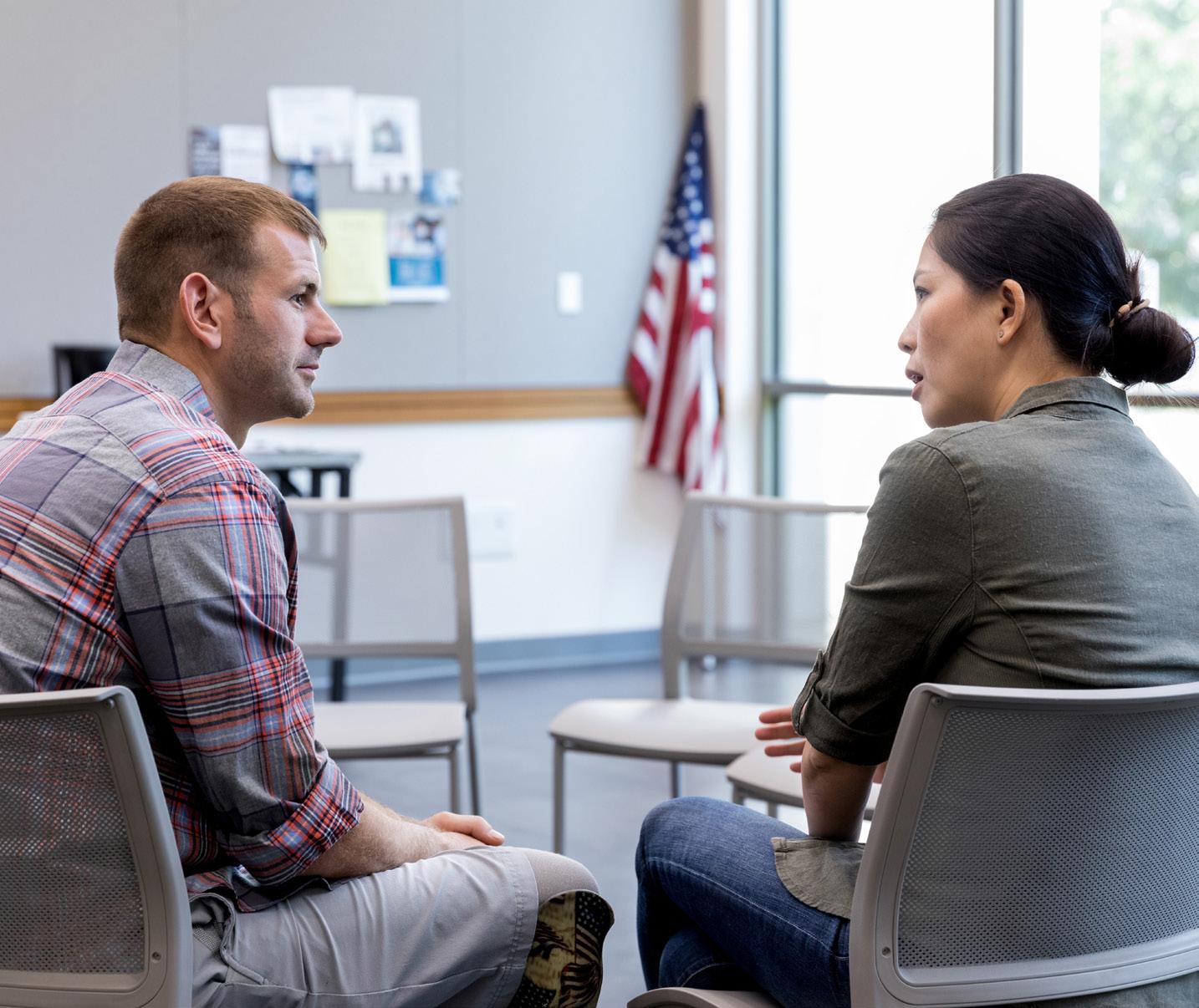
We need to tell more veteran stories Sharing your experience helps others
By Don Walker Veterans Help Net
Telling a veteran’s success stories is one of the most effective and impacting methods of getting information out about the help that is available to today’s veterans and their families. A real story can generate interest and inquiries from other veterans, their families or friends. Every story will end with “Does this story sound like someone you know?” and will include a place to contact to get help. People relate to real stories about real people. People that overcome obstacles and find life changing help can open the door for others. It doesn’t matter if the story is part of a newspaper article or told in person in casual conversation.
The impacts are huge because the listener/ reader is able to put a face to the story -- themselves or someone they know. This leads to more inquiries and referrals. By telling a veteran story we are accomplishing three things:
1. It puts a face on veterans with need because the story uses a specific real person example -- “That sounds like me” or “That
could help my friend Henry.”
2. We lead the veteran to seek help by painting a positive and specific result.
3. A veteran story shows our passion and commitment to our veterans and their families.
We need more stories! We have all heard them and many of us have lived them. Send us your stories and help us offer “Hope and Help” to our veterans and their families. Veterans Help Net will help spread the news. We gather these stories for use in our publications, including the Veterans Chronicle for The Spokesman-Review and the Veterans Press for the Coeur d’Alene Press. We also use them on our website and social media.
Send your stories, ideas and questions to don@vethelpnet.com or go to our website www.VeteransHelpNet.com or call (509) 998-6484.

















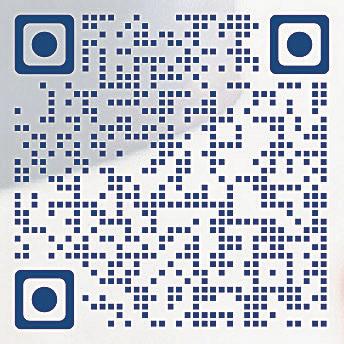



Editor’s note: This article was created by the ChatGPT application using the question, “What is the most important thing to remember on Veterans Day?”

On Veterans Day, it is crucial to remember and honor the sacrifices made by our brave men and women in uniform. This day holds immense significance as it serves as a reminder of the selflessness, courage, and dedication displayed by those who have served or are currently serving in the military. The most important thing to remember on Veterans Day is the profound gratitude we owe to these individuals. They have put their lives on the line to protect our freedoms, uphold justice, and ensure our safety. It is a day to express our appreciation for their unwavering commitment and acknowledge the immense sacrifices they have made.
Another crucial aspect of Veterans Day is to educate ourselves and others about the experiences and challenges faced by veterans. By understanding their stories and struggles, we can develop a deeper appreciation for the sacrifices they have made. It is important to recognize the physical and emotional toll that military service can have on individuals and their families.
Moreover, Veterans Day provides an opportunity to support and assist veterans in various ways. This could involve volunteering at veterans’
organizations, donating to charities that support veterans, or simply reaching out to a veteran in your community to express gratitude and offer assistance if needed. Small acts of kindness can make a significant difference in the lives of those who have served.
Lastly, it is essential to reflect on the importance of peace and strive for a world free from conflict. Veterans Day serves as a reminder of the devastating consequences of war and the need to work towards peaceful resolutions. By promoting peace and understanding, we can honor the sacrifices made by veterans and create a better future for generations to come.
In summary, the most important thing to remember on Veterans Day is to express gratitude, educate ourselves, support veterans, and strive for peace. By doing so, we can honor the sacrifices made by our veterans and ensure that their service is never forgotten.














